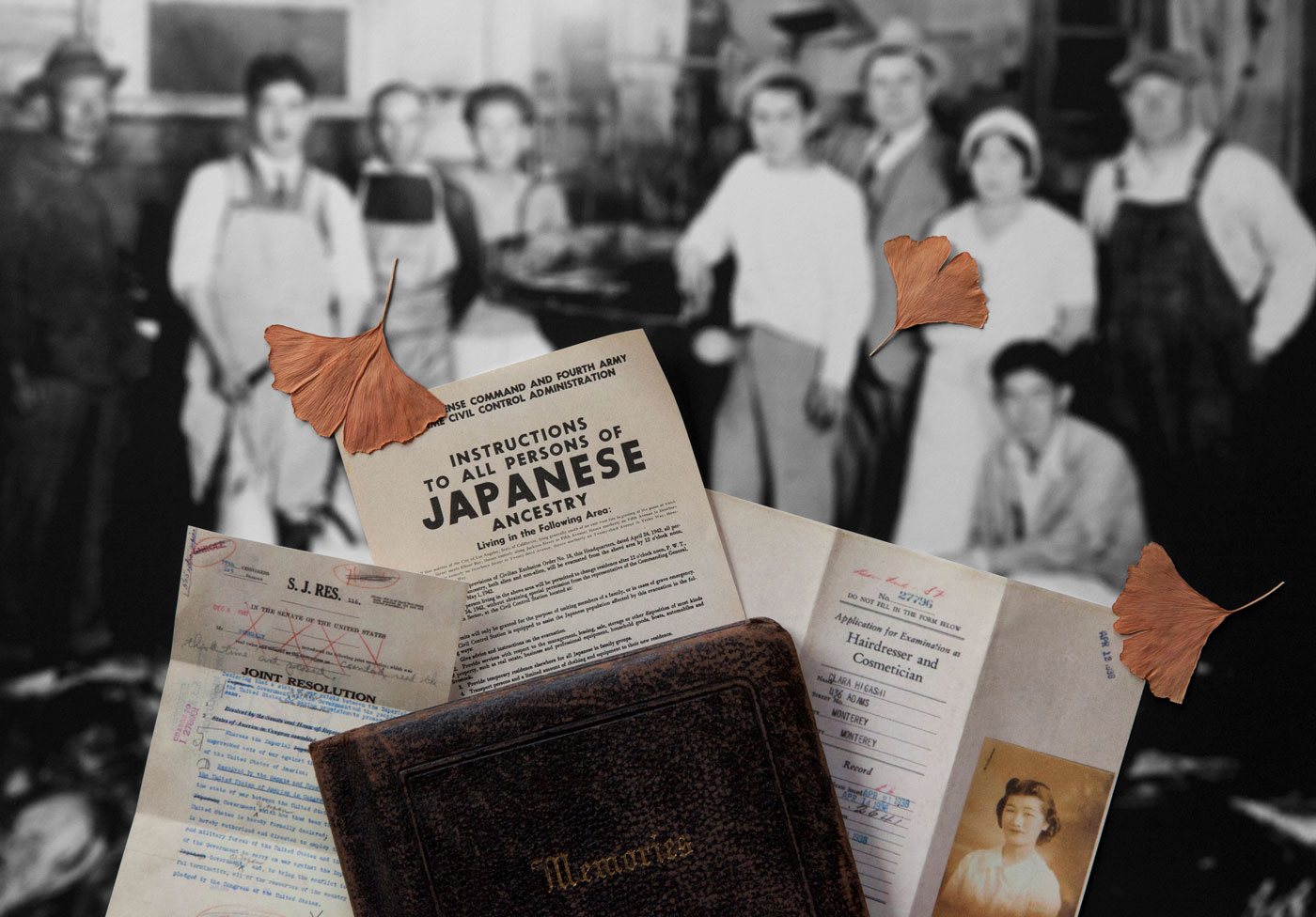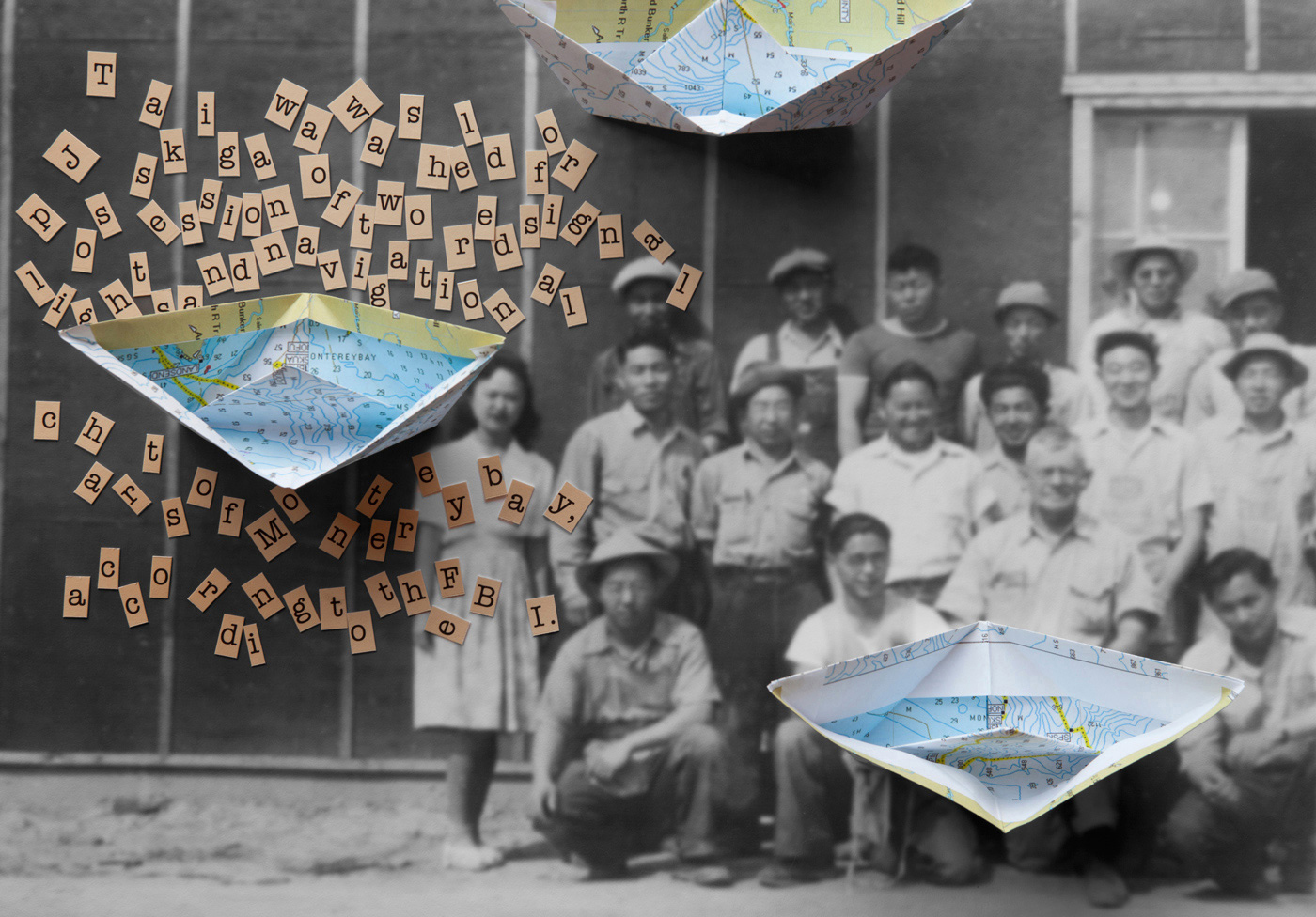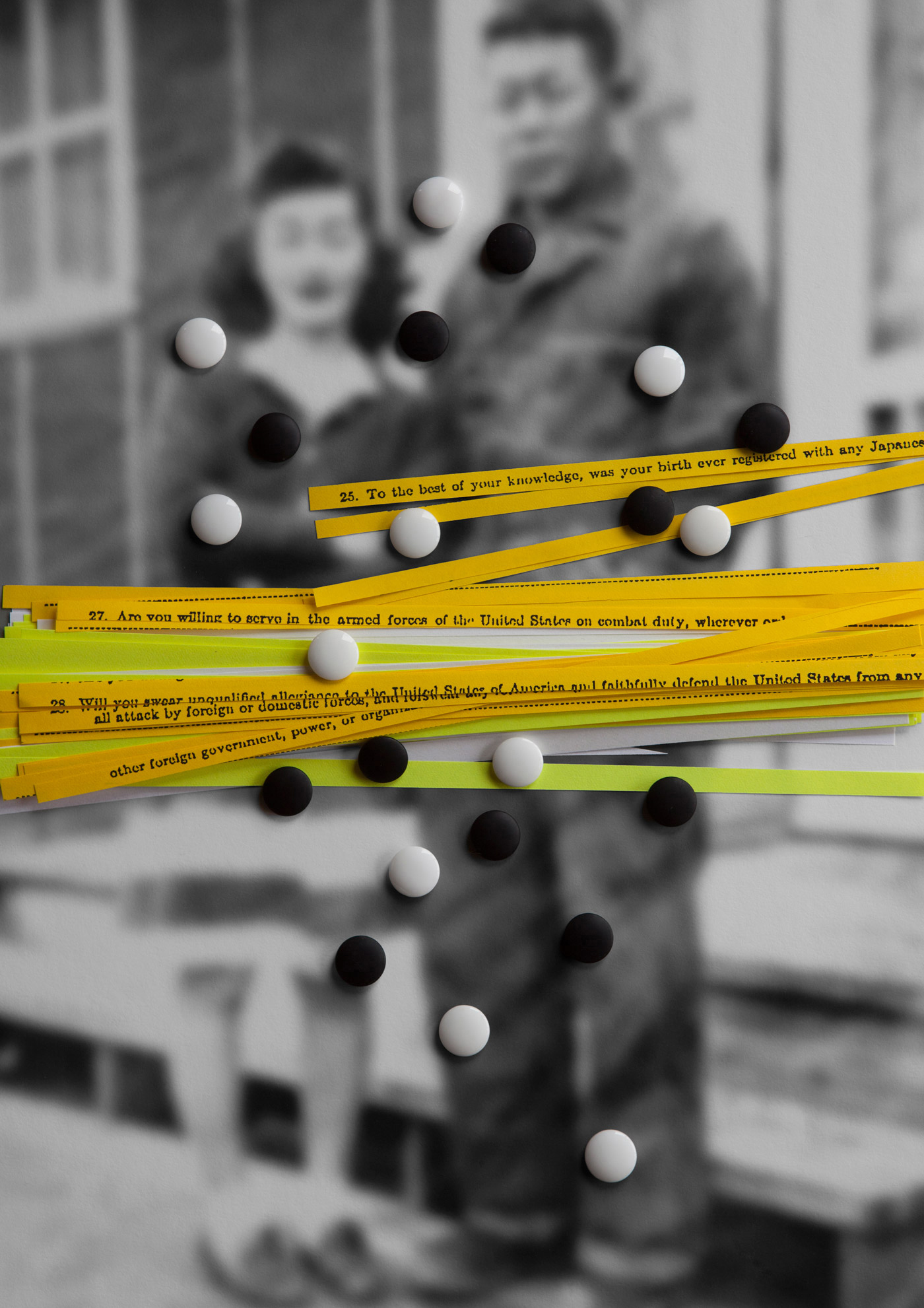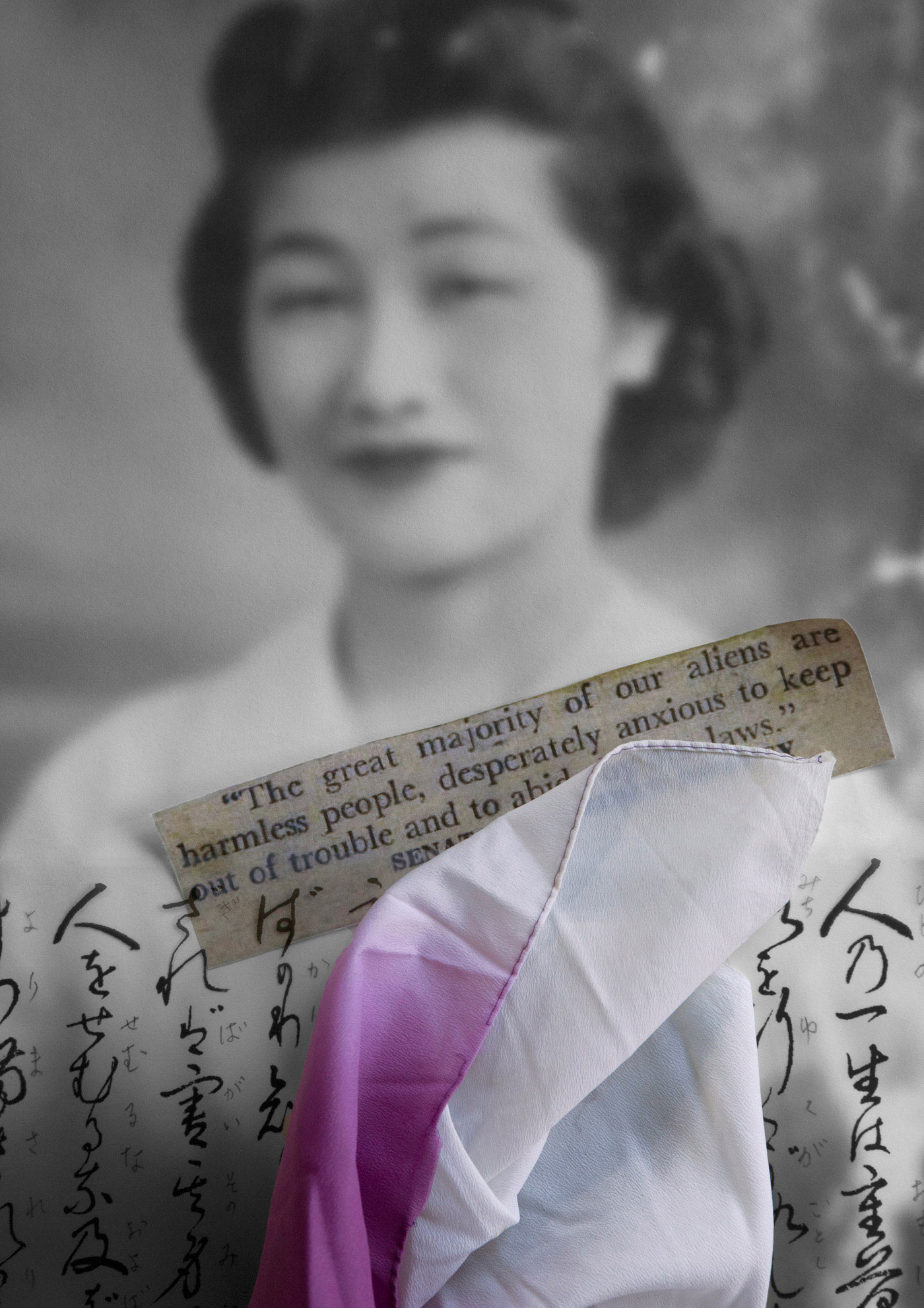






Artist's Statement
Jerry Takigawa
To better understand my affinity to paradox, I was compelled to examine my past. I began working with family photographs, combined with text-based artifacts, to express a long silenced family story through simple in-camera photographs. My fearful anticipation of working with images dealing with WWII incarceration was borne out in the emotions that were exposed. “Balancing Cultures” evolved to prompt conversations about racism, hysteria and economic exploitation in America. I came to understand my family’s (and my own) shame and to believe that our culture’s inability to live with paradox resulted in perilous polarities.
In 1942, Executive Order 9066 brought untold distress to all Japanese Americans living on the west coast. My family experienced the economic loss of property, the shame and indignation of incarceration, and the task of re-integration into American society after release from the WWII concentration camps. How did the Japanese Americans resolve such a travesty of justice? They have a saying for this—“shikata ga nai—it cannot be helped.” But there is another saying—“gaman—persevere and stay silent,” that distinguished the tolerance of their losses.
The polarities we see today are caused by an inability to live with diversity. The intent of this project is to commemorate my unheard family story and bring its kindred feelings to light through art. Balancing Cultures posits accepting paradox as an essential ingredient for a balanced life. It speaks to the wholeness of an inclusive “both/and” model of living and encourages a tolerant and plural tomorrow—the only positive tomorrow possible.


